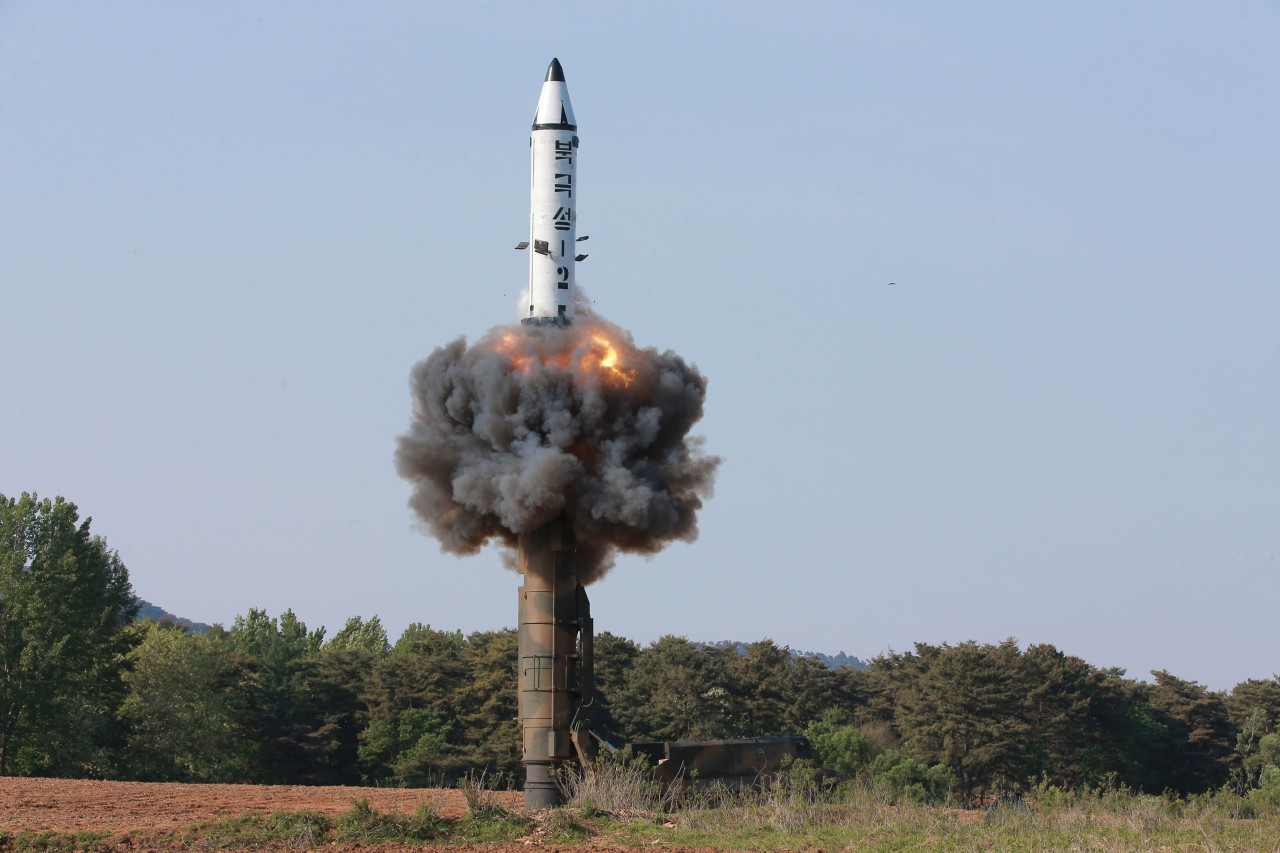North Korean projectile could be submarine-launched ballistic missile
Missile launch comes barely 13 hours after announcement of US-North Korea working-level talks later this week
By Jo He-rimPublished : Oct. 2, 2019 - 18:08
An unidentified projectile fired into the East Sea by North Korea on Wednesday appears to be a submarine-launched ballistic missile, South Korean authorities said, raising the possibility that Pyongyang’s missile capabilities may be improving.
Seoul’s Joint Chiefs of Staff said it detected Pyongyang’s firing of an unidentified ballistic missile in the waters off the northern part of Wonsan, North Korea’s Kangwon Province, toward the East Sea at 7:11 a.m.
Seoul’s Joint Chiefs of Staff said it detected Pyongyang’s firing of an unidentified ballistic missile in the waters off the northern part of Wonsan, North Korea’s Kangwon Province, toward the East Sea at 7:11 a.m.

While further analysis is needed to determine the exact type of projectile, the JCS said it appeared to be a type of Pukguksong. The Pukguksong missiles are submarine-launched mid-range ballistic missiles, which have also been test-launched on land.
The ballistic missile flew 450 kilometers at a maximum altitude of 910 kilometers, the JCS said. The unusually high altitude shows that the North fired the missile at a high angle. It would have flown much farther had it been fired from a normal angle.
Further assessment is needed to determine whether the ballistic missile was fired from a barge or an actual submarine, the JCS said.
Cheong Wa Dae also said the projectile appeared to be an SLBM and expressed strong concerns, following an emergency National Security Council meeting early in the morning.
Japan has condemned the launch, claiming that the projectile fell into its Exclusive Economic Zone for the first time in nearly two years. Tokyo initially said the North had fired two projectiles, but later changed its assessment to one.
According to Japan’s Defense Minister Taro Kono, Tokyo is analyzing whether the missile was an SLBM.
Wednesday’s launch came barely 13 hours after Pyongyang announced that it would resume working-level negotiations on denuclearization with the United States on Saturday and that a preparatory meeting would be held Friday.
“I believe North Korea’s launch this morning carries various intentions, to raise its bargaining power (in negotiations with the US),” Defense Minister Jeong Kyeong-doo said at a parliamentary audit session on Wednesday.
“We have presented military weapons (yesterday). As the North has criticized the strengthening of our military, it appears to have considered such factors in conducting the launch early this morning.”
Celebrating the 71th Armed Forces Day on Tuesday, South Korea’s military revealed its new F-35A stealth fighter jets to the public for the first time. Pyongyang has often denounced Seoul for deploying the warplane, saying it threatens the North’s security.
Wednesday’s launch marked the 11th firing of projectiles into the East Sea this year by North Korea, and it would be the first SLBM launch, if confirmed, since May 2017.
Experts think the missile launched Wednesday may be a type of Pukguksong-3, a SLBM previously only revealed in a blueprint.
According to the Defense Ministry, North Korea is believed to have the Pukguksong-1 and Pukguksong-2. Their maximum flight range is around 1,300 kilometers, and both are mid-range ballistic missiles.
“There is a possibility that what was launched (today) is the Pukguksong-3, a SLBM,” Kim Dong-yub, a professor at Kyungnam University’s North Korean Studies School, said.
The blueprint of the Pukguksong-3 was first revealed in a photograph of North Korean leader Kim Jong-un’s visit to a research institute, released Aug. 23, 2017.
“North Korea appears to have fired the projectile at a high angle. If it had been launched normally, it would have flown between 1,500 kilometers to 2,000 kilometers,” professor Kim said.
North Korean leader Kim also inspected a newly built submarine in July, and South Korea’s intelligence authorities believe it may be ready to be deployed soon.
As SLBMs, fired under water, are difficult to detect in advance, they are considered one of the most threatening weapons program for the US and its allies in the region, along with intercontinental ballistic missiles.
By Jo He-rim (herim@heraldcorp.com)




![[Herald Interview] 'Amid aging population, Korea to invite more young professionals from overseas'](http://res.heraldm.com/phpwas/restmb_idxmake.php?idx=644&simg=/content/image/2024/04/24/20240424050844_0.jpg&u=20240424200058)















